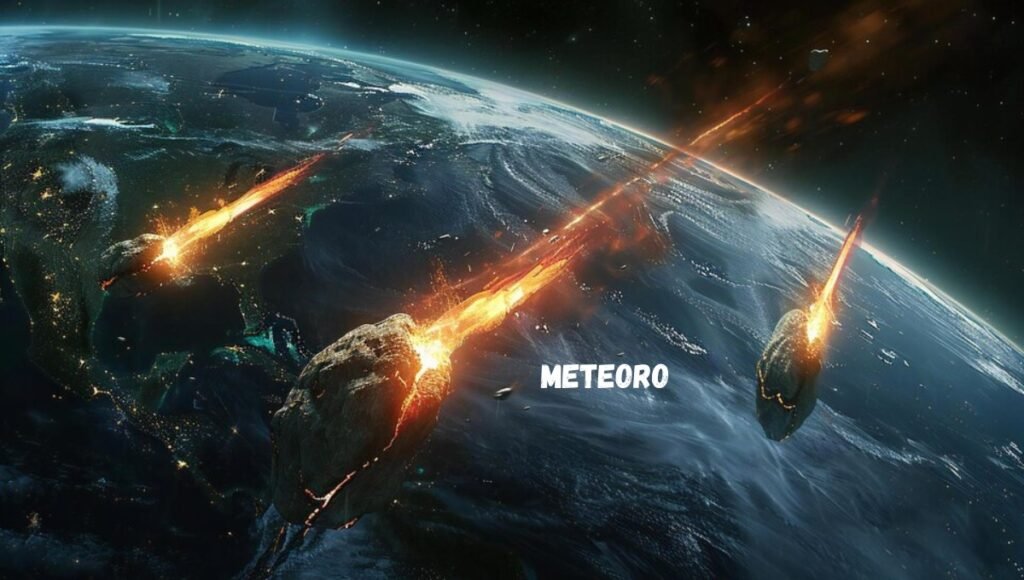The universe is vast, filled with countless celestial wonders that fascinate scientists and sky-gazers alike. One such awe-inspiring phenomenon is the meteoro. Commonly referred to as shooting stars, these space rocks are more than just beautiful light streaks in the night sky. In this article, we’ll explore everything you need to know about meteoro, from their origin to their impact on Earth.
What is a Meteoro?
A meteoro, more commonly known as a meteor, is the streak of light seen when a meteoroid—a small rock or particle from space—enters Earth’s atmosphere. As it travels through the atmosphere at high speeds, friction with air molecules causes the meteoroid to heat up, producing a bright glow. This glowing trail is what we observe as a meteoro.
The Difference Between Meteoroids, Meteors, and Meteorites
It’s important to clarify the distinction between meteoroids, meteors, and meteorites:
- Meteoroid: A small rock or particle in space.
- Meteoro: The flash of light that occurs when a meteoroid burns up upon entering Earth’s atmosphere.
- Meteorite: If a meteoroid survives its fiery descent and lands on Earth, it is then classified as a meteorite.
Each of these terms represents a different stage in the life of a space rock, and understanding these definitions is key to grasping the broader concept of meteoro.
How Do Meteoros Form?
Meteoroids, the precursors to meteoro, originate from various sources. They can be fragments from asteroids, comets, or even other celestial bodies. When these fragments break away due to collisions or other events in space, they can travel across the solar system. If one of these fragments encounters Earth’s atmosphere, the immense speed and friction cause it to heat up, producing a visible meteoro.
Meteoro Showers: A Celestial Light Show
Meteoro showers are among the most captivating astronomical events. These occur when Earth passes through a comet’s debris trail, which consists of numerous meteoroids. As these particles collide with the atmosphere, they create a multitude of meteoro streaks visible to the naked eye.
Some of the most famous meteoro showers include:
- Perseids (August)
- Leonids (November)
- Geminids (December)
During these times, stargazers can often see dozens of meteors per hour, making for a spectacular light show.
Are Meteoros Dangerous?
While meteoro are mostly harmless, larger meteoroids have the potential to cause damage. In fact, history records a few significant events where meteorites—large remnants of meteoroids—struck the Earth with considerable force.
The most famous event is the Tunguska event in 1908, when a large meteoro exploded over Siberia, flattening trees across a 2,000 square kilometer area. Despite the destruction, events of this magnitude are extremely rare, and most meteoro burn up entirely in the atmosphere before reaching the ground.
The Importance of Meteoros in Science
Meteoro offer valuable scientific insight. When meteorites are recovered, they can be studied to learn more about the solar system’s history and composition. Some meteorites contain elements that date back billions of years, offering clues about the formation of planets and stars.
By analyzing the materials in meteorites, scientists can also gain insight into the conditions present in space, further expanding our understanding of the universe.
Meteoros in Culture and Mythology
Throughout history, meteoro sightings have influenced various cultures and belief systems. In ancient times, meteoro were often viewed as omens, either good or bad. Many civilizations believed that meteoro represented messages from the gods or foretold significant earthly events.
Even in modern times, the beauty and mystery of meteoro continue to captivate people worldwide. Stargazing and meteor shower watching remain popular pastimes, connecting people to the vastness of the cosmos.
Frequently Asked Questions (FAQs)
Q: What is the difference between a meteoro and a shooting star?
A: The terms meteoro and shooting star are often used interchangeably. Both refer to the bright streak of light produced when a meteoroid enters Earth’s atmosphere.
Q: How fast do meteoros travel?
A: Meteoros can travel at speeds ranging from 25,000 to 160,000 miles per hour. The immense speed is what causes them to burn up and produce the bright light seen from Earth.
Q: Can I touch a meteoro?
A: While you can’t touch a meteoro (the light phenomenon), you can touch a meteorite—the fragment that survives the journey through the atmosphere and lands on Earth. Meteorites are often displayed in museums or collected by enthusiasts.
Q: How often do meteoros occur?
A: Small meteoros happen every night, though most are too faint to be seen with the naked eye. During meteoro showers, dozens or even hundreds of meteoros can be observed in a single night.
Q: Can meteoros hit Earth?
A: Most meteoro burn up entirely in the atmosphere, but larger fragments can sometimes make it to Earth’s surface, becoming meteorites. These impacts are rare, and only a few large meteorites are recorded each year.
Conclusion
Meteoros are one of the most captivating phenomena visible in the night sky. These fiery space rocks not only provide a stunning spectacle but also offer valuable scientific insight into the universe. Whether observed during a meteoro shower or studied through meteorite samples, meteoros continue to inspire awe and wonder.
Understanding meteoros helps bridge the gap between the vastness of space and our existence here on Earth, reminding us of the incredible forces at play in the cosmos. So, next time you see a streak of light darting across the sky, you’ll know just how extraordinary that meteoro really is.


